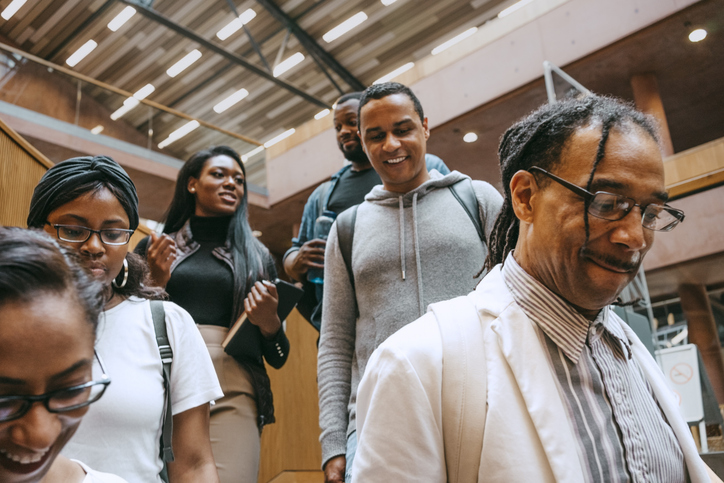
Despite consistently making do with fewer resources and far smaller endowments than their white peers, a new study finds students at historically Black colleges and universities have better overall mental health and show significantly stronger resilience compared to their peers nationwide.
The study, conducted jointly by the United Negro College Fund’s Institute for Capacity Building, the Healthy Minds Network and The Steve Fund, finds that, 45% of HBCU students report “flourishing” mental health compared to 36% in national samples of all colleges and 38% among Black students at predominantly white institutions.
“This research confirms what we’ve long understood about the unique power of HBCUs to nurture not just academic achievement, but holistic well-being among HBCU students,” says Michael Lomax, UNCF president and CEO.
RELATED: COVID-19 and the Classroom: A Look at How Schools Have Recovered in the Past Five Years
“Even with fewer resources than our peers, these institutions create environments where students are affirmed and celebrated, fostering remarkable mental resilience despite significant socio-economic challenges,” Lomax said.
The Healthy Minds Network researches issues affecting adolescent and young adult mental health. It conducts the Healthy Minds Study, which surveys post-secondary students about their mental health.
The Steve Fund is a nonprofit organization focused on transforming educational, organizational, and workplace environments to support the mental health and emotional well-being of young people of color.
Researchers examined mental health indicators among 2,504 students across 16 HBCUs and two predominantly Black institutions during the 2022-2023 and 2023-2024 academic years.
They found that nearly 80% of HBCU students believe their institutions prioritize mental well-being, compared to 73% of Black students at PWIs. And 8 in 10 HBCU students report having a strong sense of belonging within their campus community, versus 73% nationally and 72% for Black students at PWIs.
HBCU students also exhibit rates of anxiety, substance use disorders and eating disorders that are significantly lower than the national average, according to the report. Moreover, 74% of HBCU students were significantly less likely to keep negative feelings to themselves when feeling sad, the report found, compared to 86% of Black students at PWIs.
These results track with a study published March 28 on JAMA Network that found exposure to racial discrimination was tied to an increased likelihood of experiencing anxiety, depression or both.
Researchers from Boston University, Brown University, and Harvard studied responses from the 2023 US National Health Interview Survey (NHIS). The respondents are adults aged 18 years or older living in all and the District of Columbia.
“Discrimination is increasingly recognized for its effect on physical and mental health,” the research says. This includes “everyday discrimination” defined as “routine, often subtle, forms of mistreatment that individuals experience, such as being treated with less respect, encountering microaggressions, or receiving inferior service.”
RELATED: Treating Mental Health Can Lower Maternal Mortality Rate
Experiencing even infrequent acts of racial bias increases a person’s likelihood of being diagnosed as depressed or suffering from anxiety.
Among Black adults, rates of depression increased from 9% in 2013-2016 to 21% in 2023 and rates of anxiety increased from 6% in 2018 to 27% in 2023. For the overall population depression rates among women increased from 10% to 23%, while rates among men similarly increased from 5.5% to 22% during the same timeframe.
The U.S. has been grappling with a mental health crisis in recent years, with rising rates of anxiety, depression, and suicide since the COVID pandemic. Nearly one in five adults experience a mental illness issue each year, according to a 2023 report from the National Institute of Mental Health.
There’s also been a significant decline in youth mental health with increasing rates of depression, anxiety, and suicidal thoughts among adolescents.
Suicide remains a leading cause of death among individuals aged 10–24, according to the Centers for Disease Control and Prevention. The 2023 Youth Risk Behavior Survey of teens and young adults found that 42% of high school students experienced persistent sadness or hopelessness, and nearly 1 in 5 seriously considered attempting suicide.

